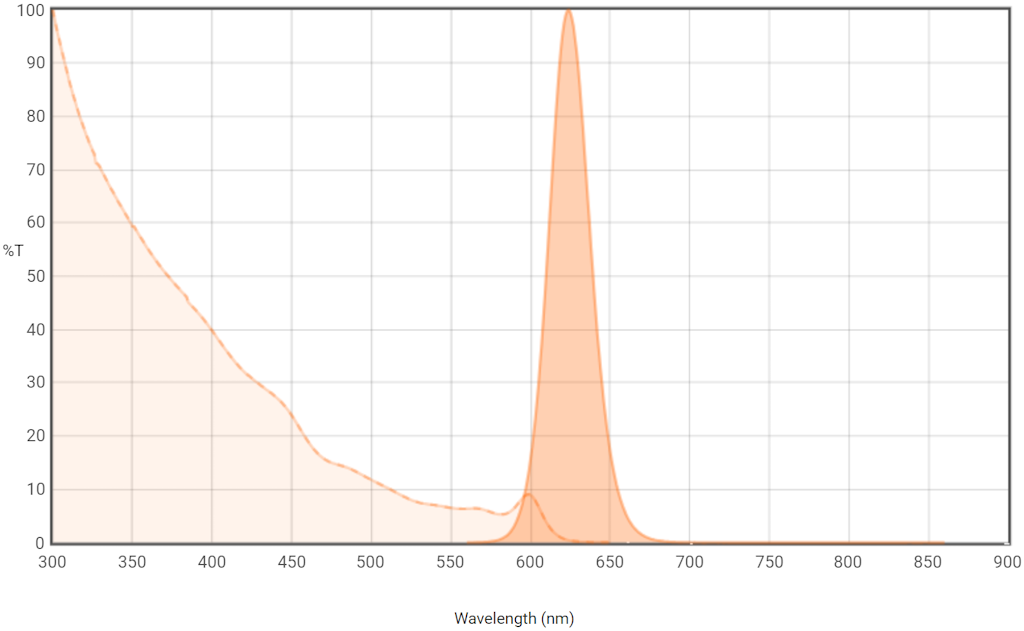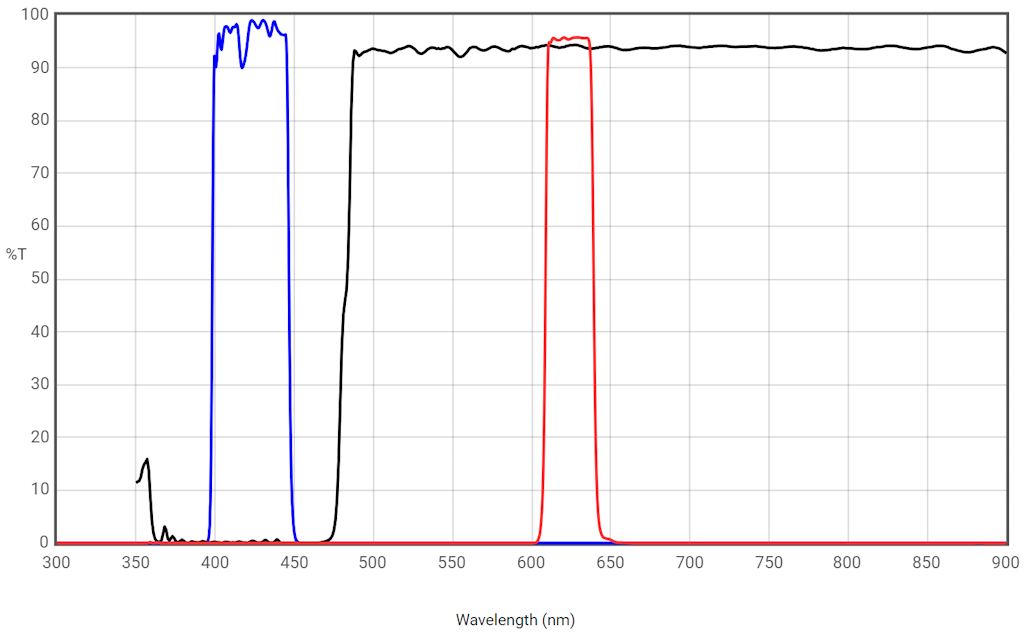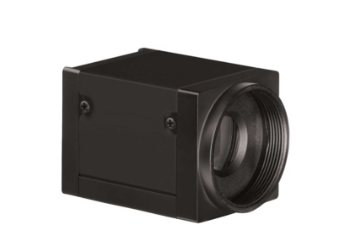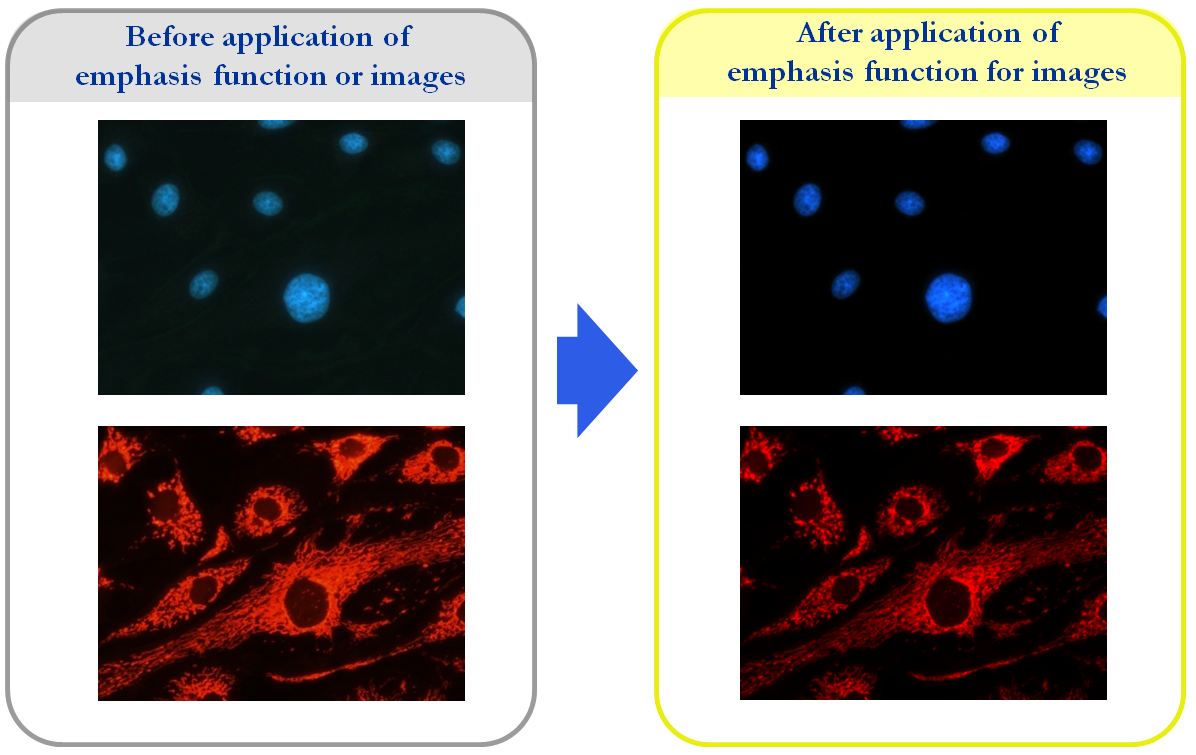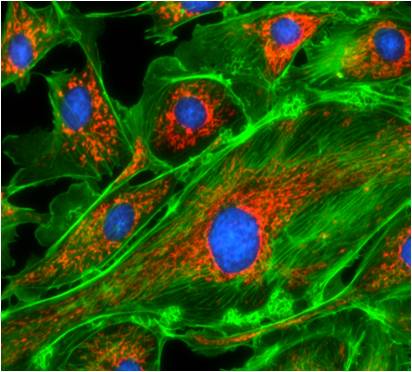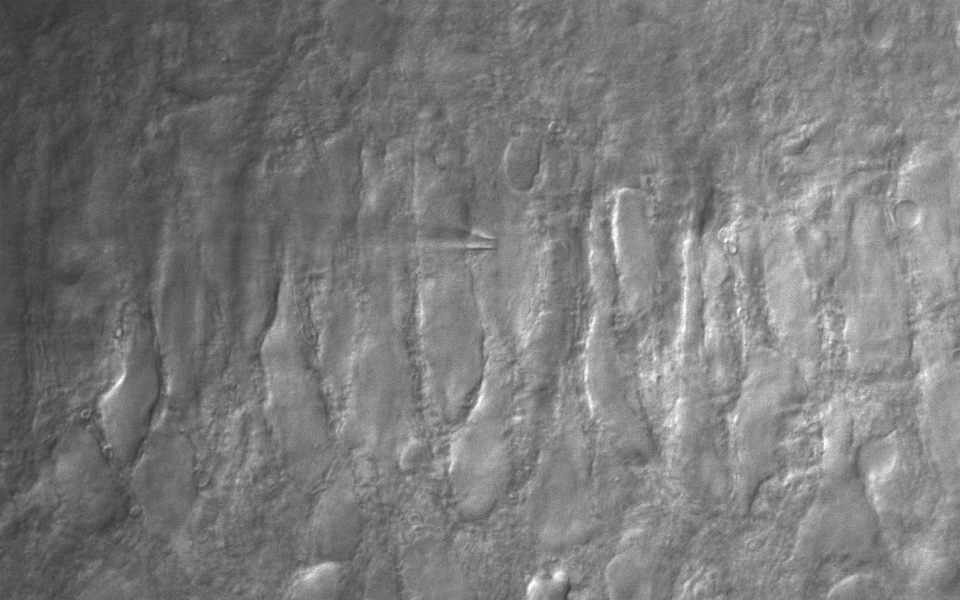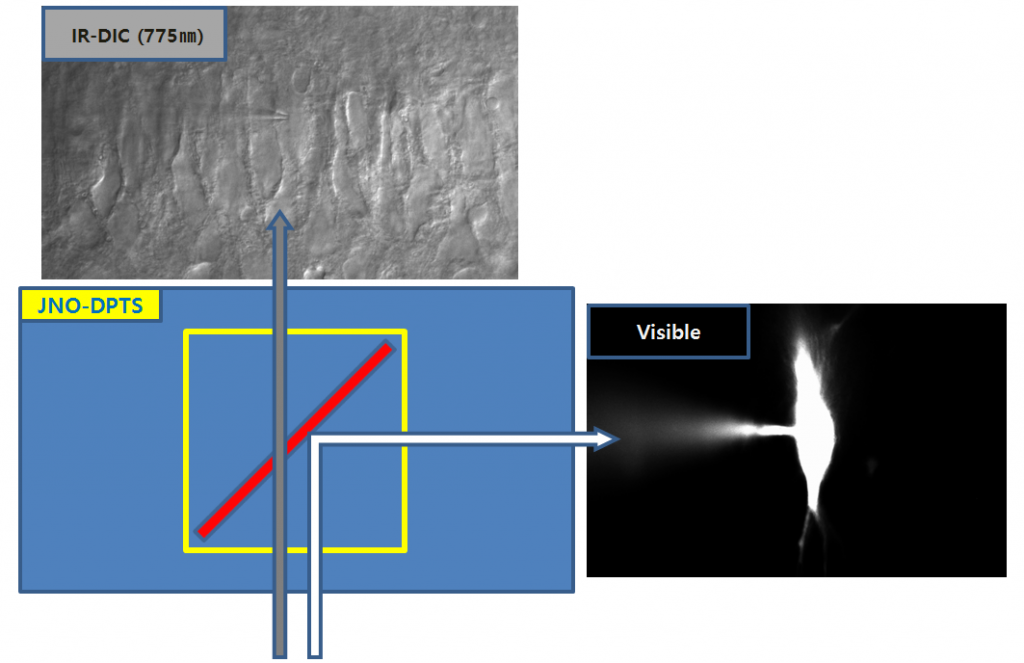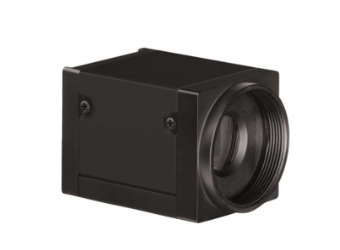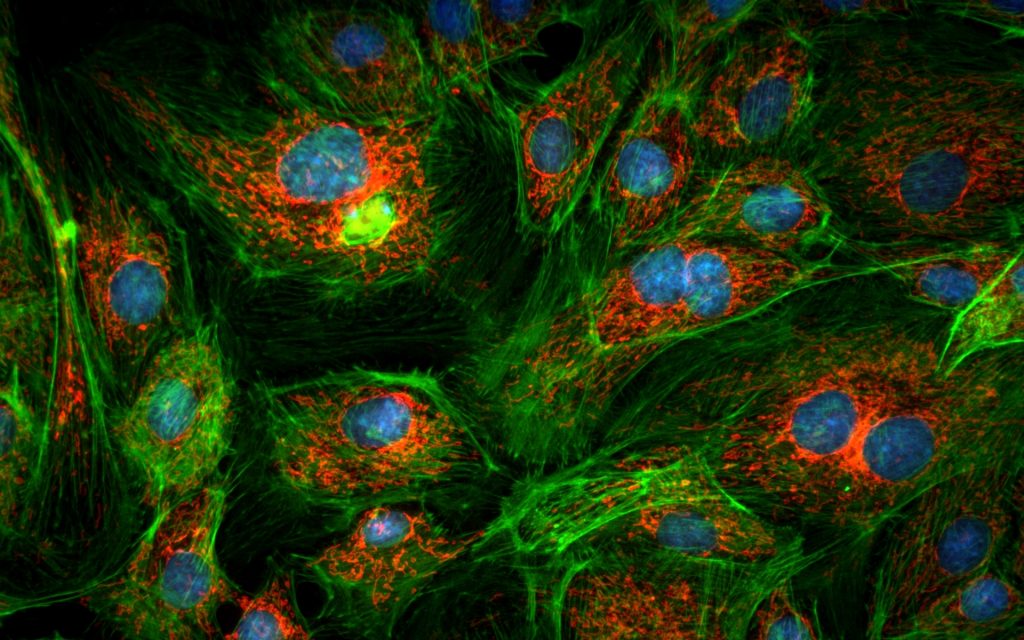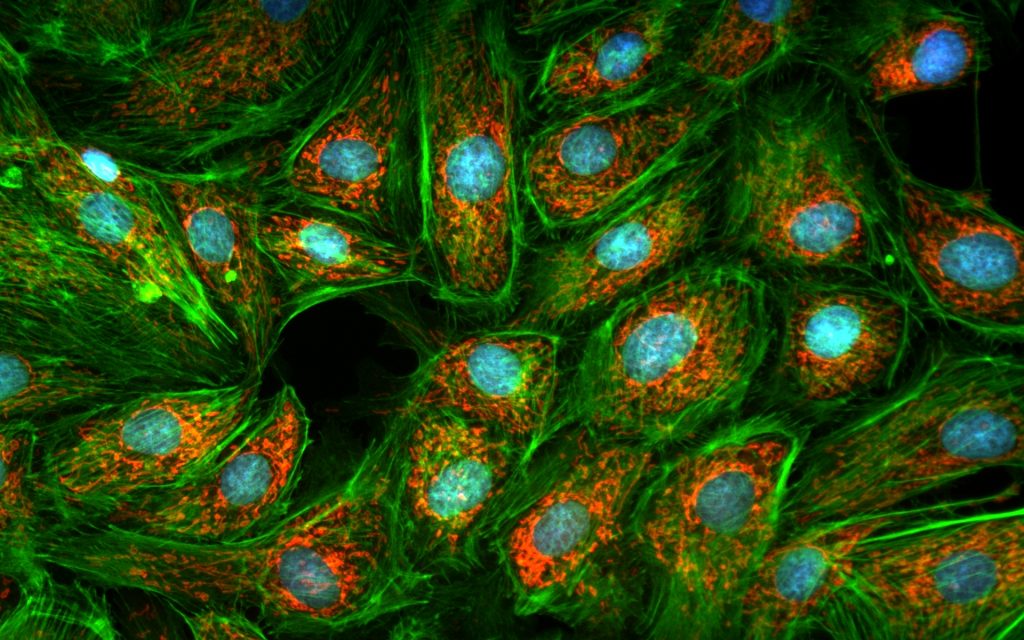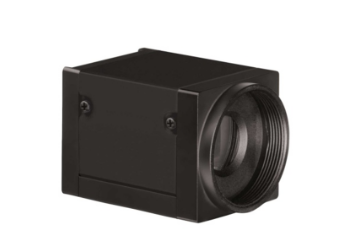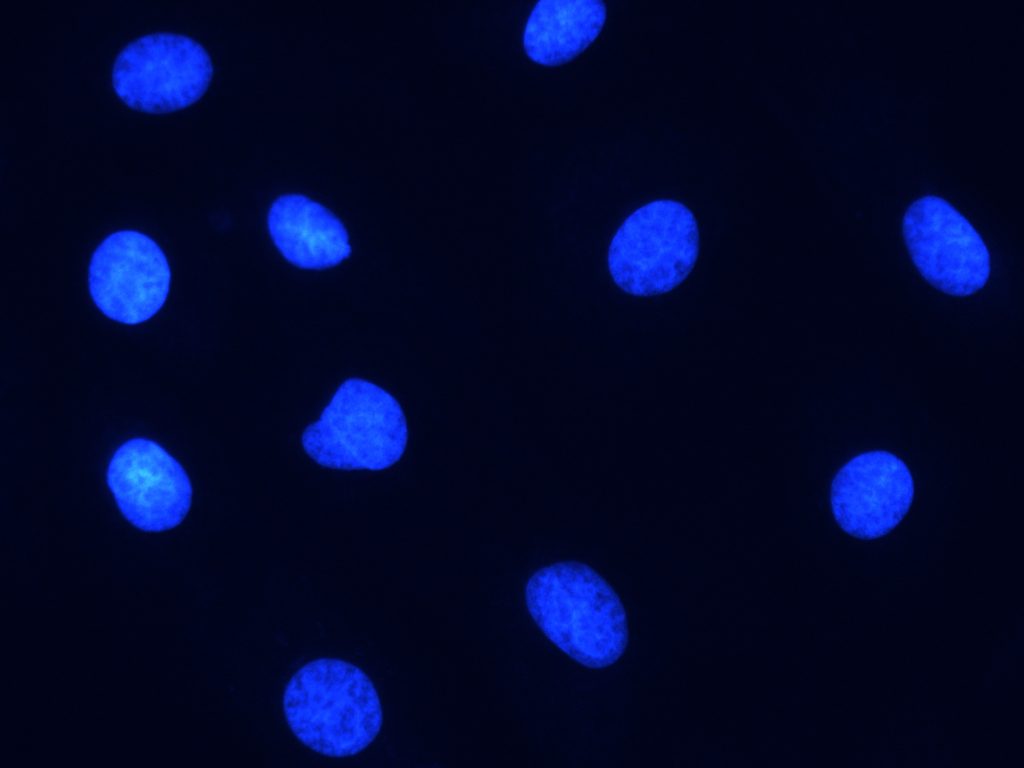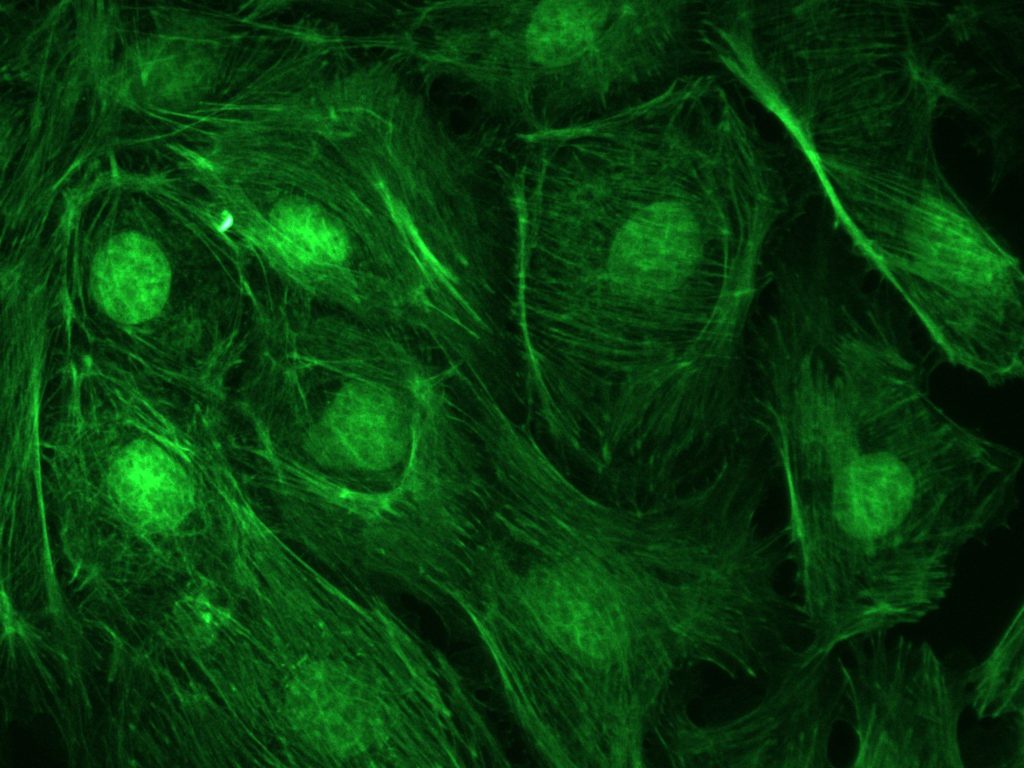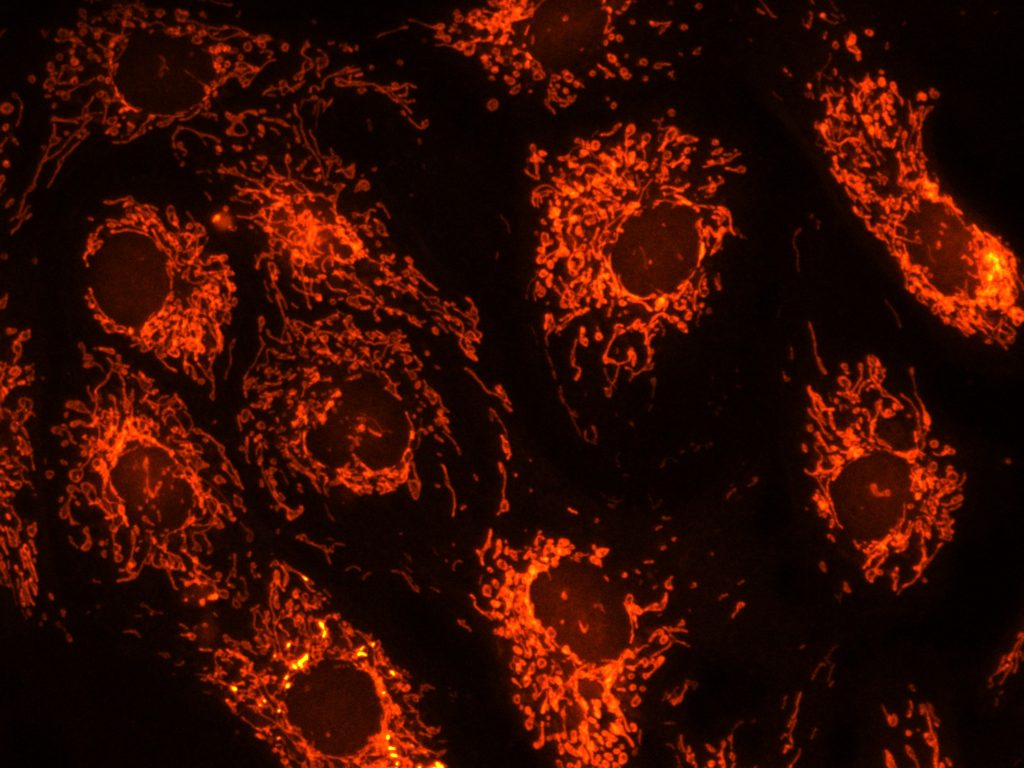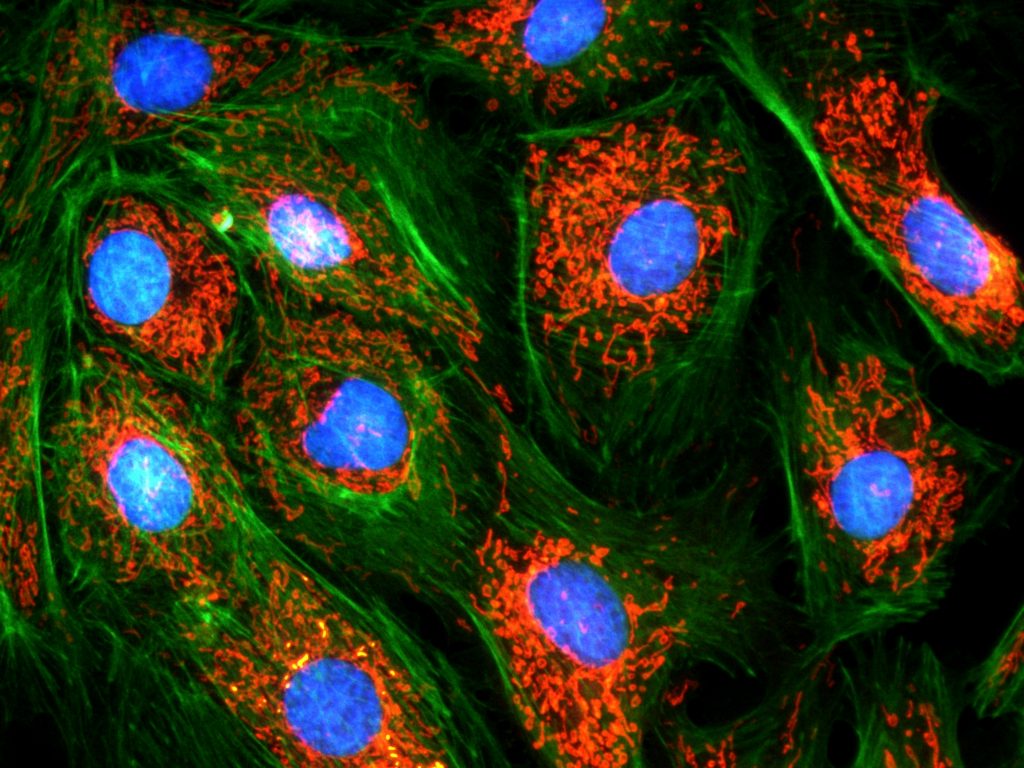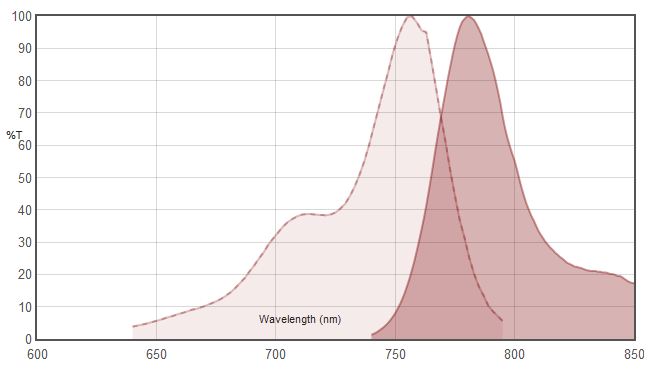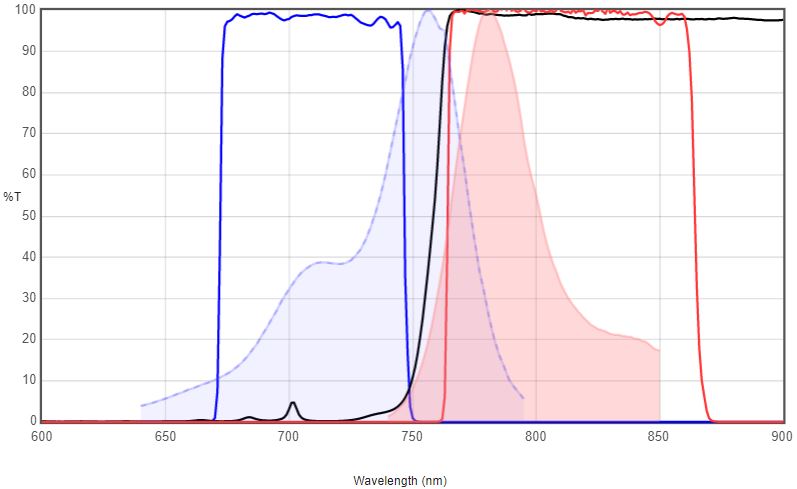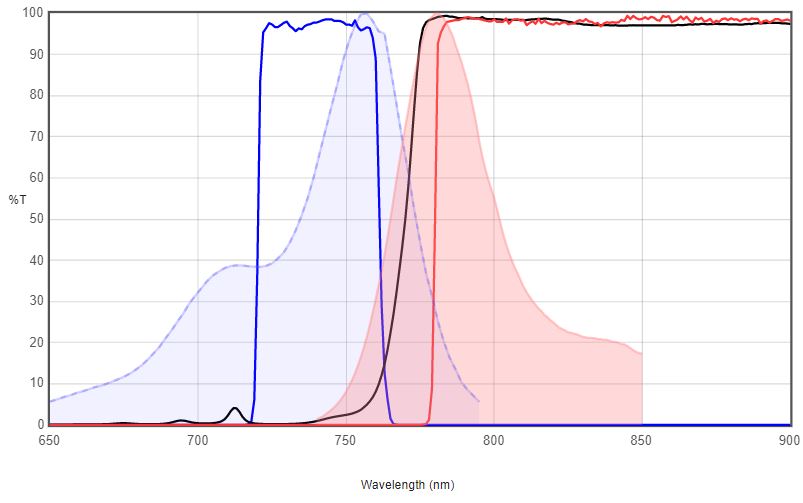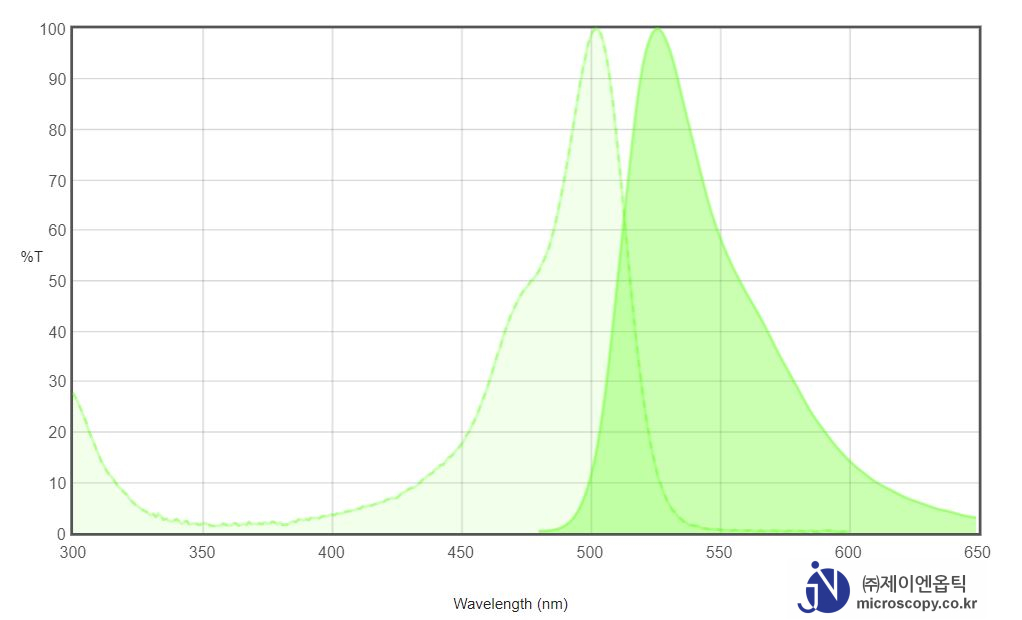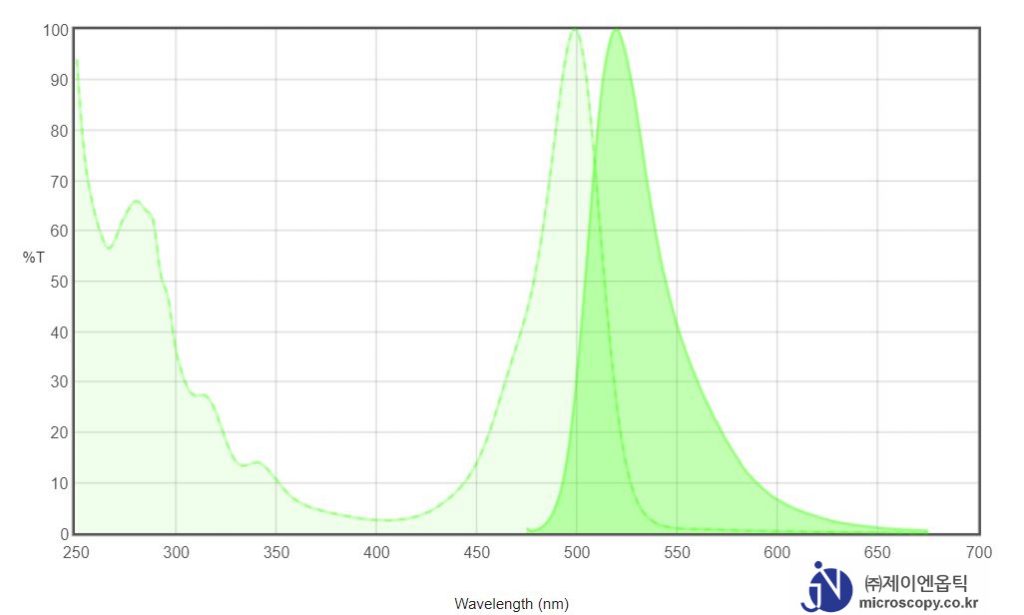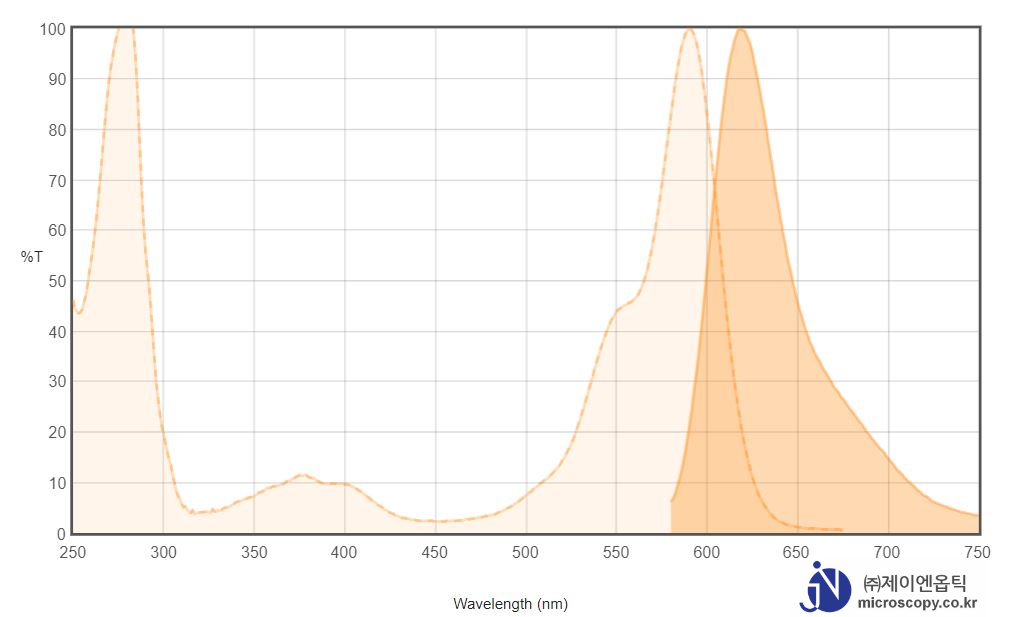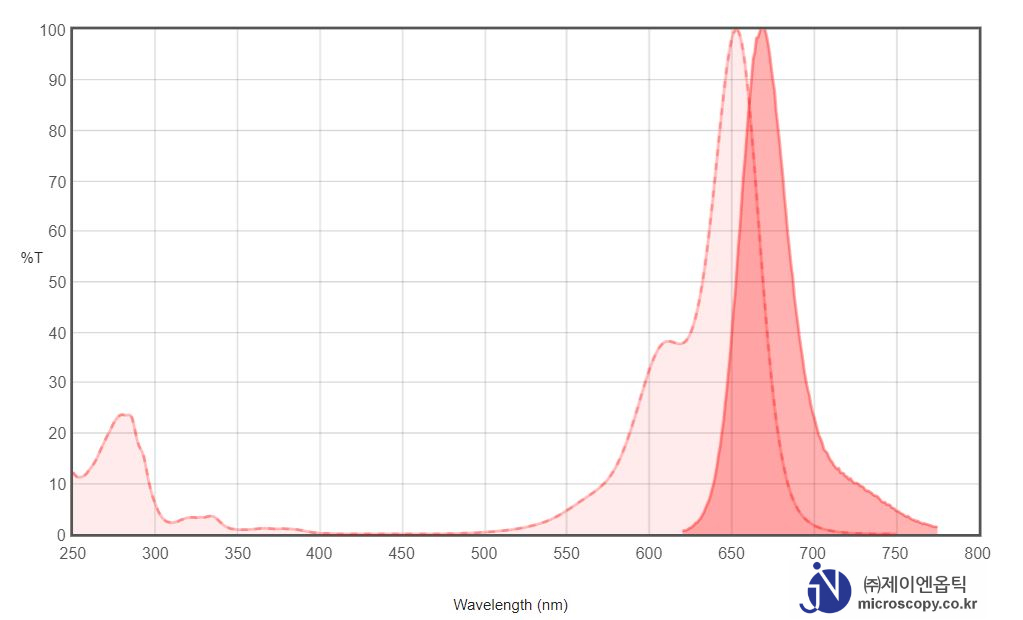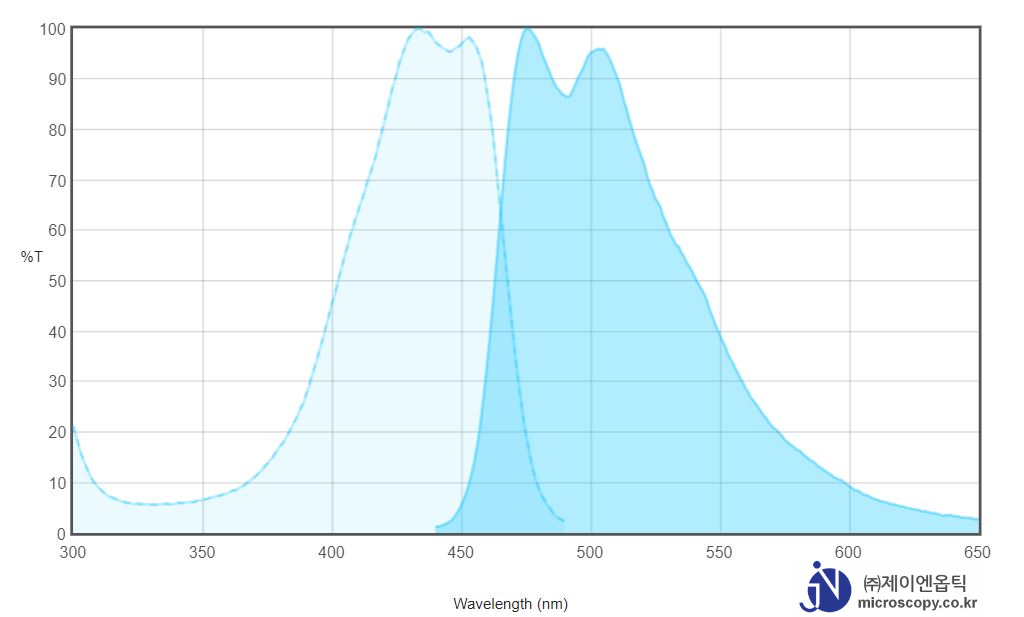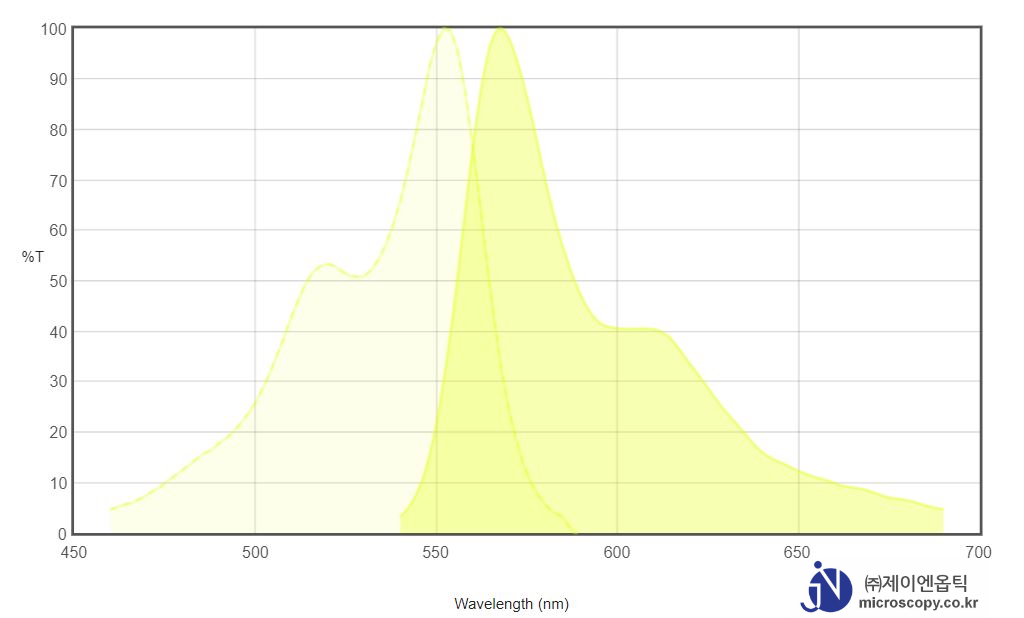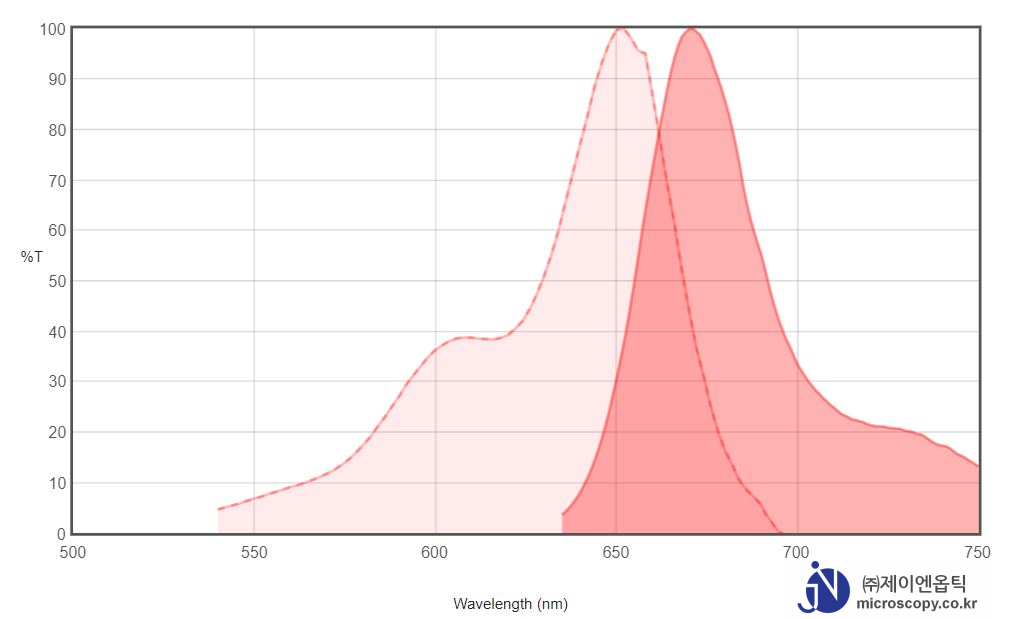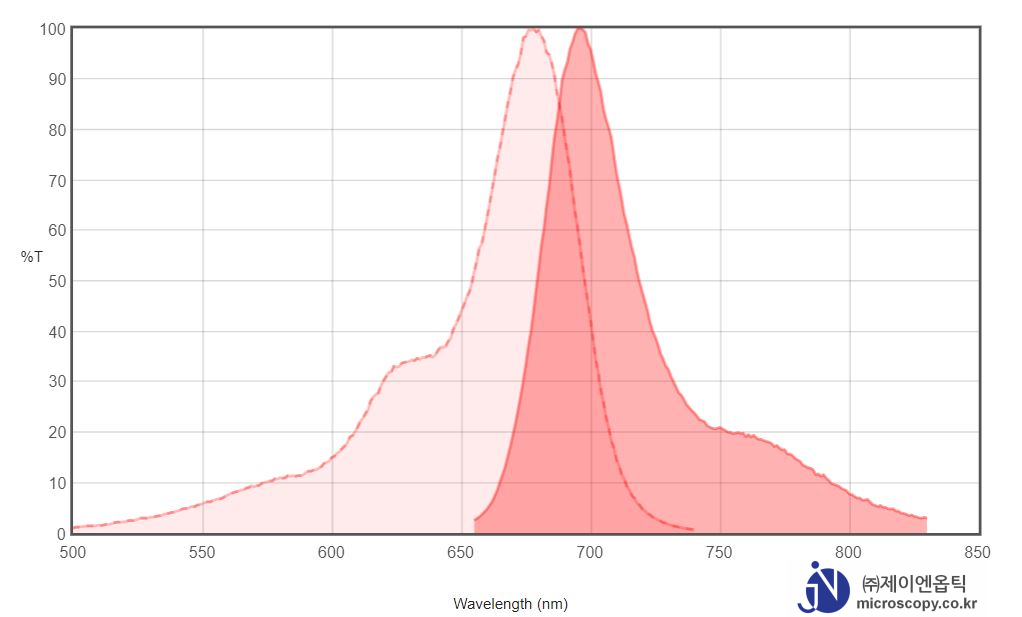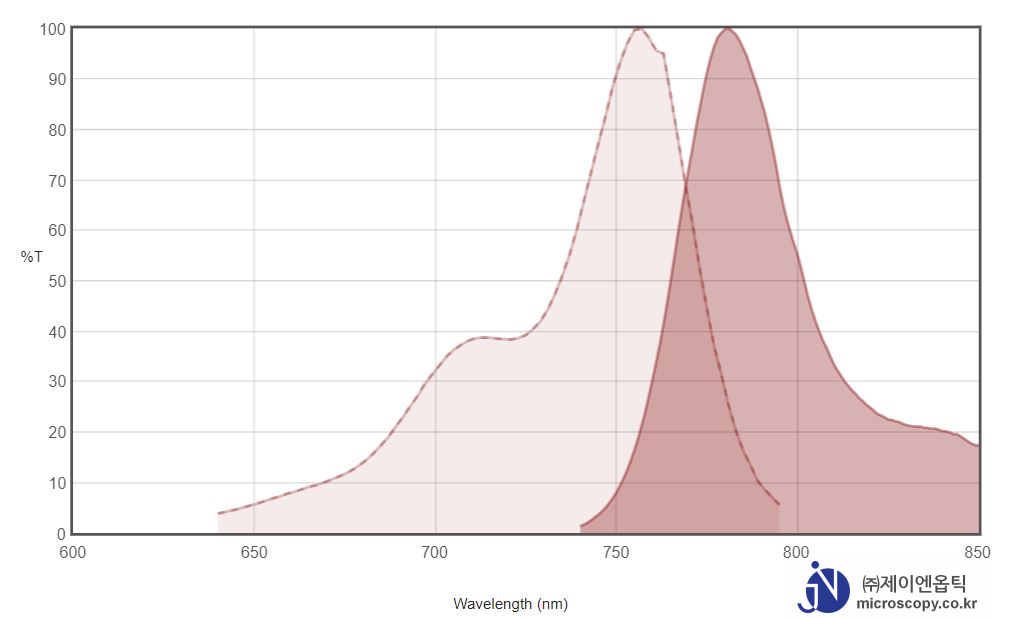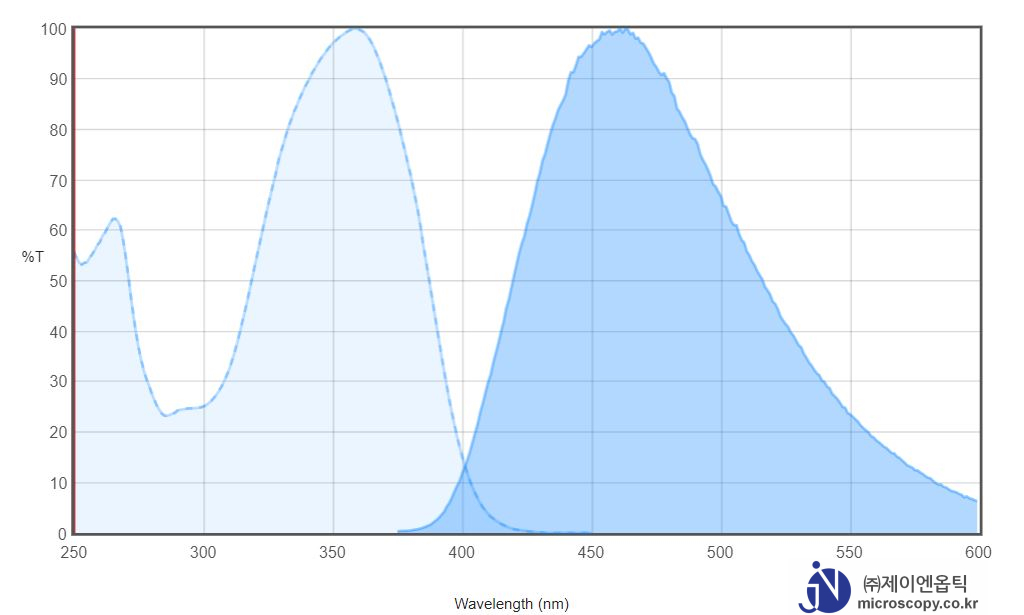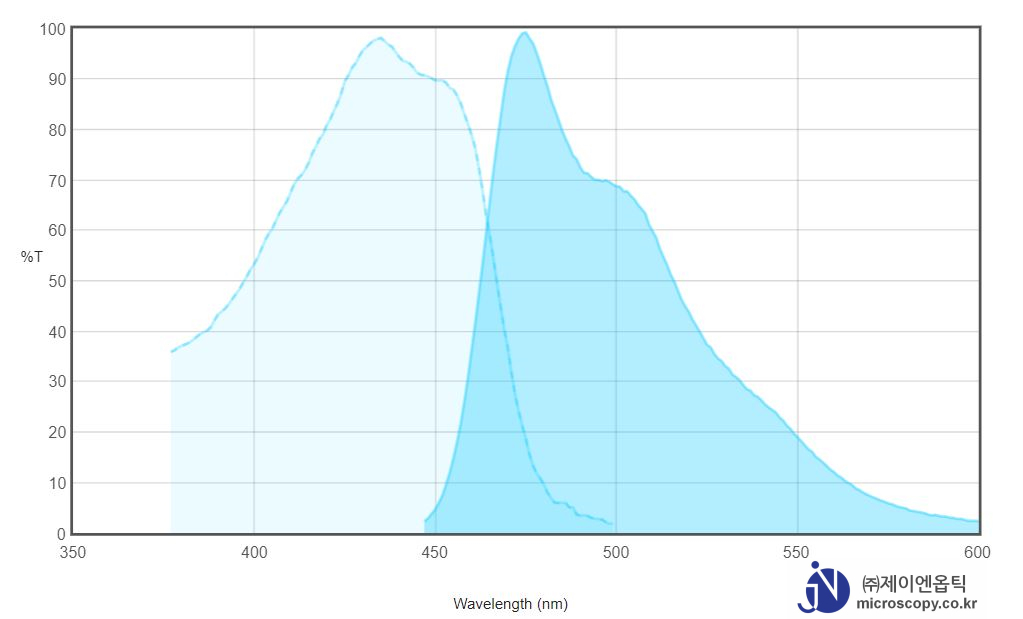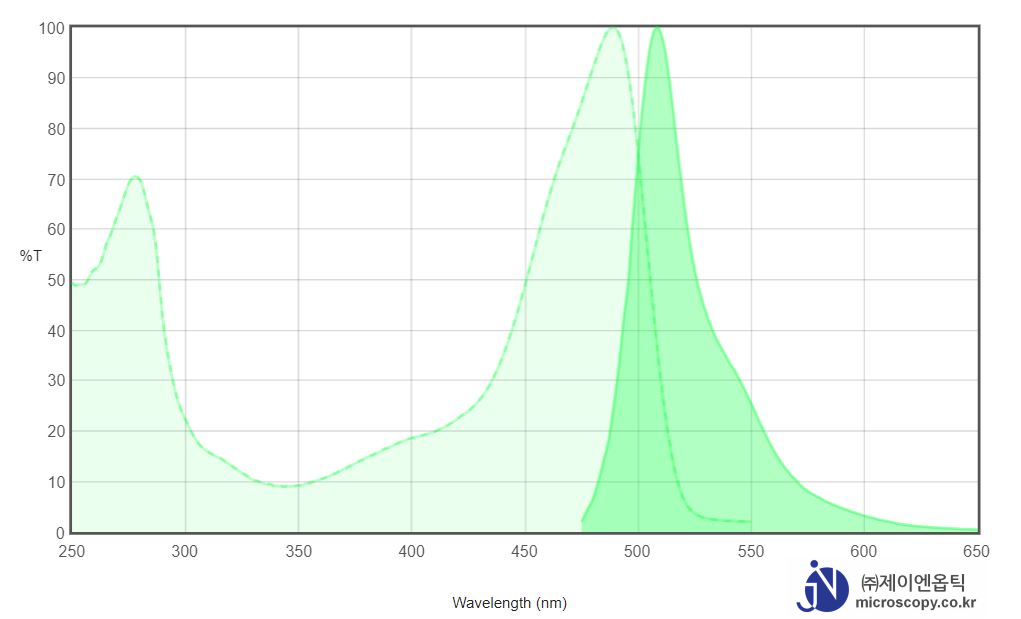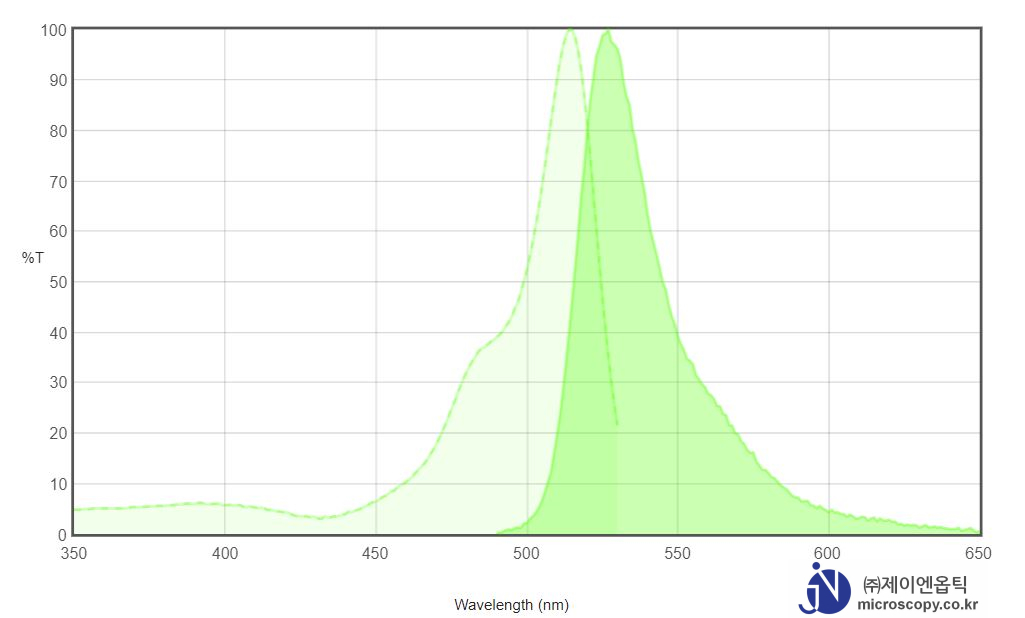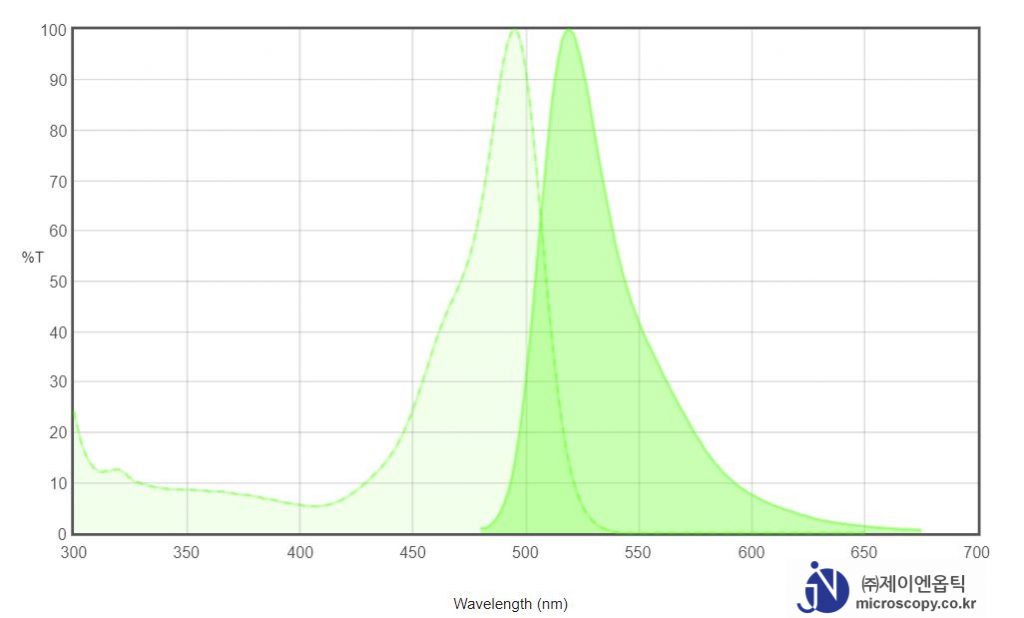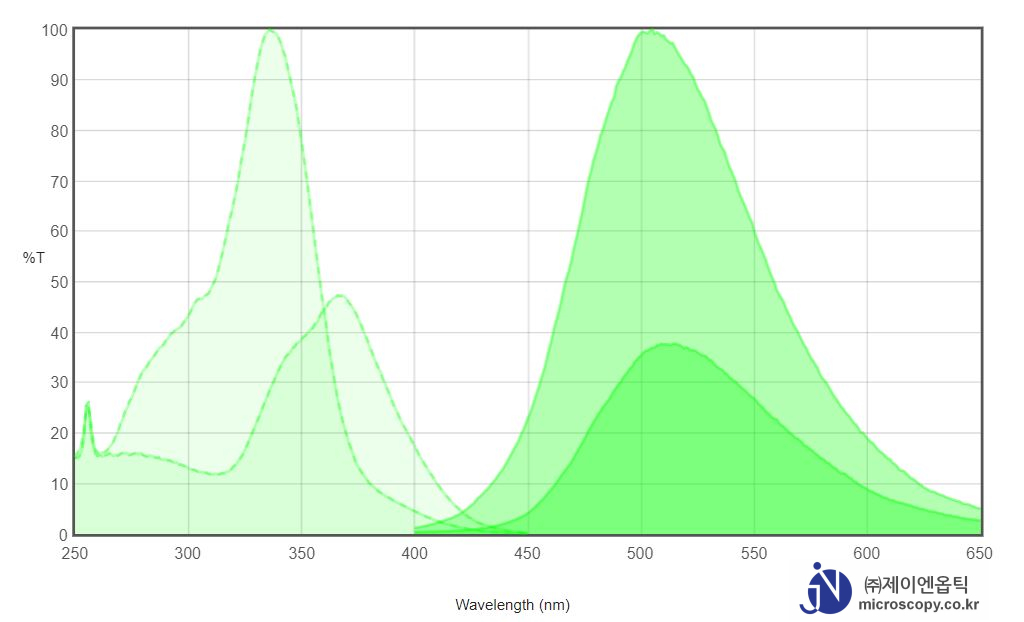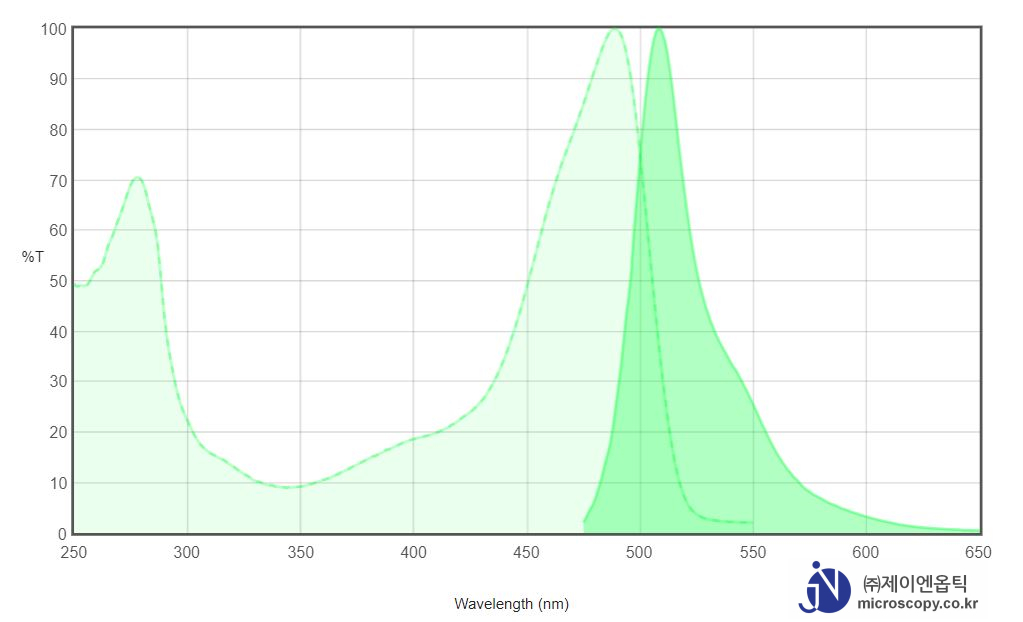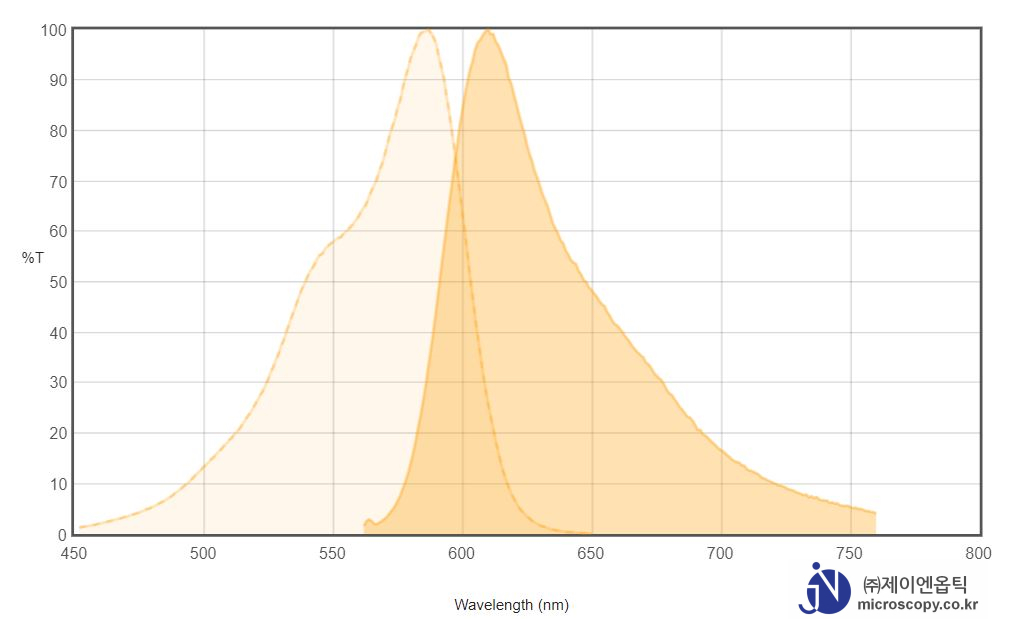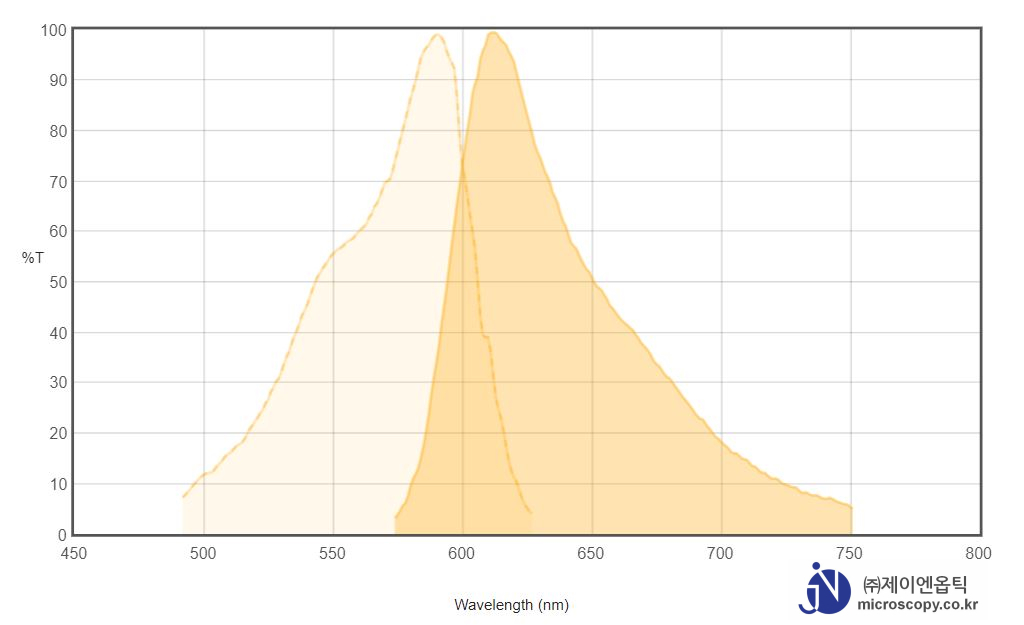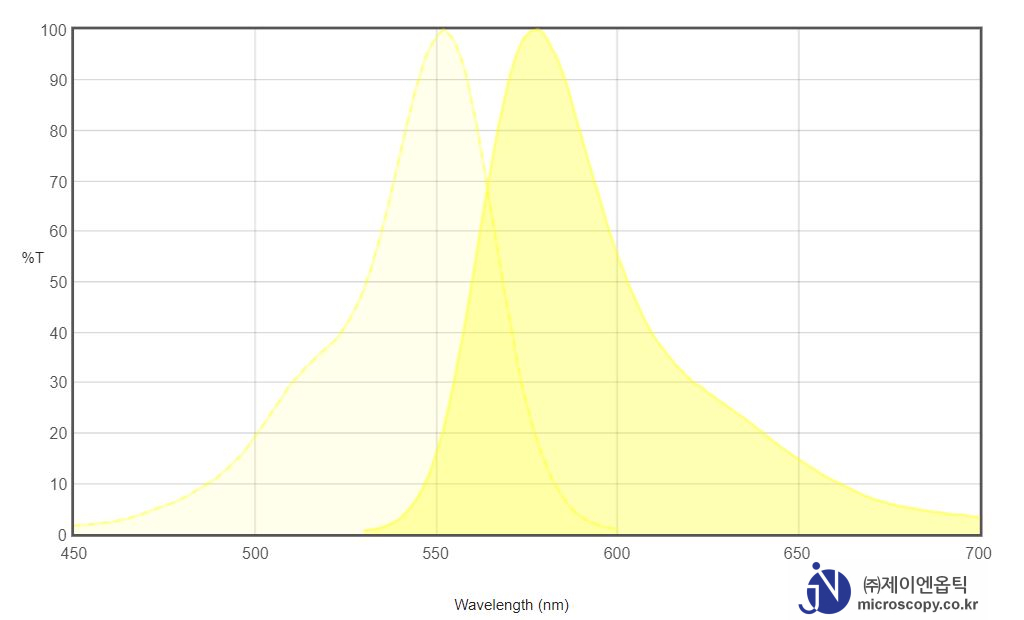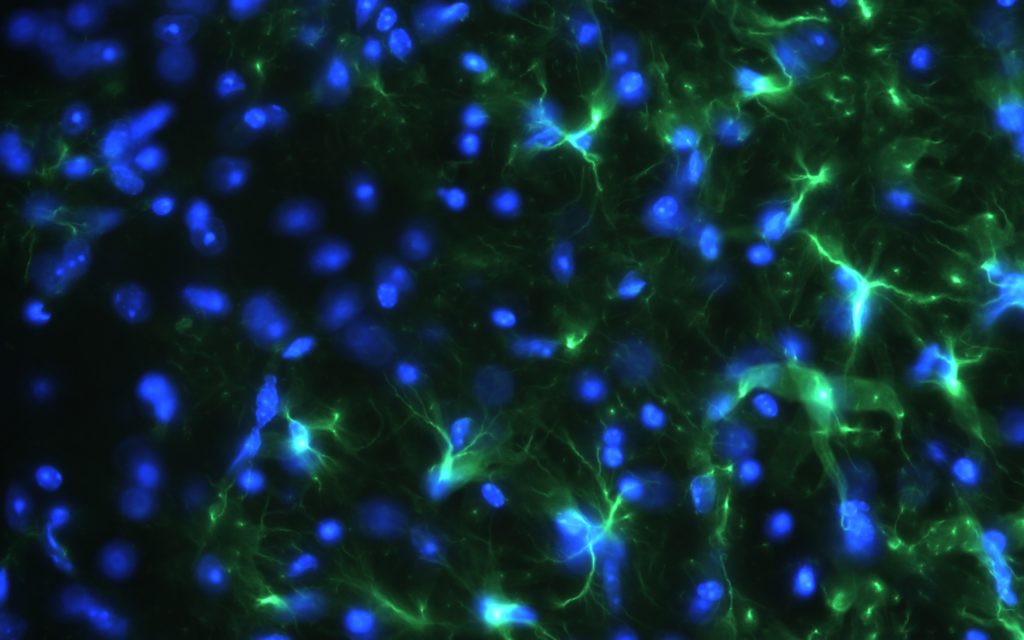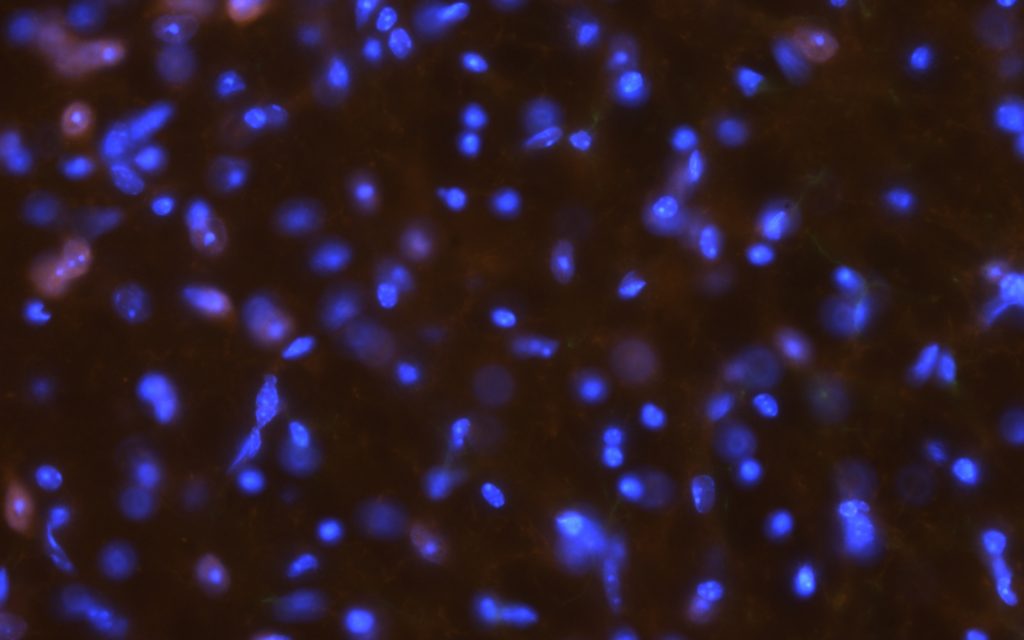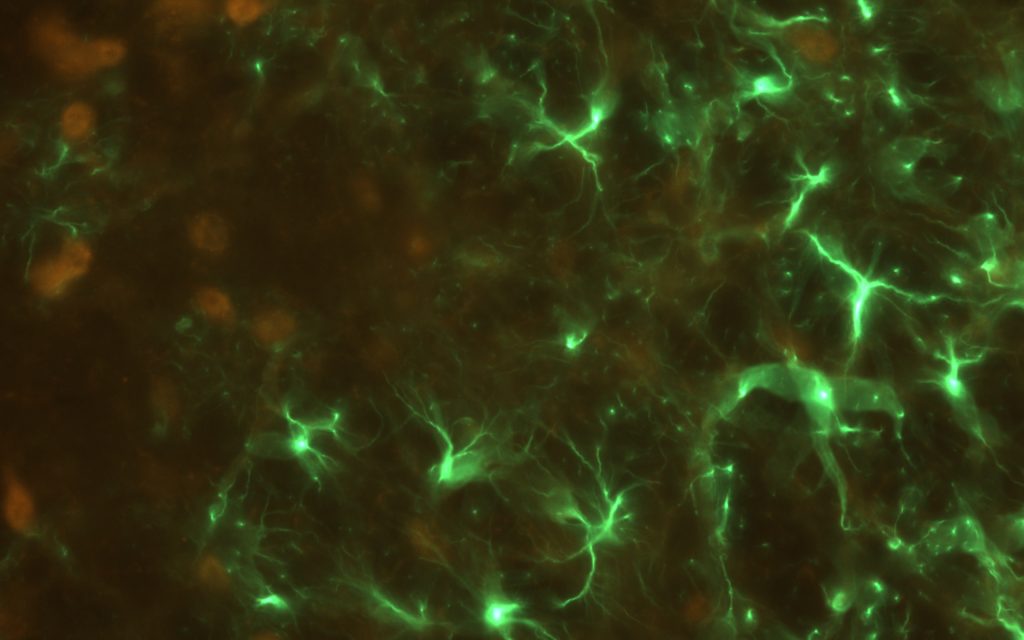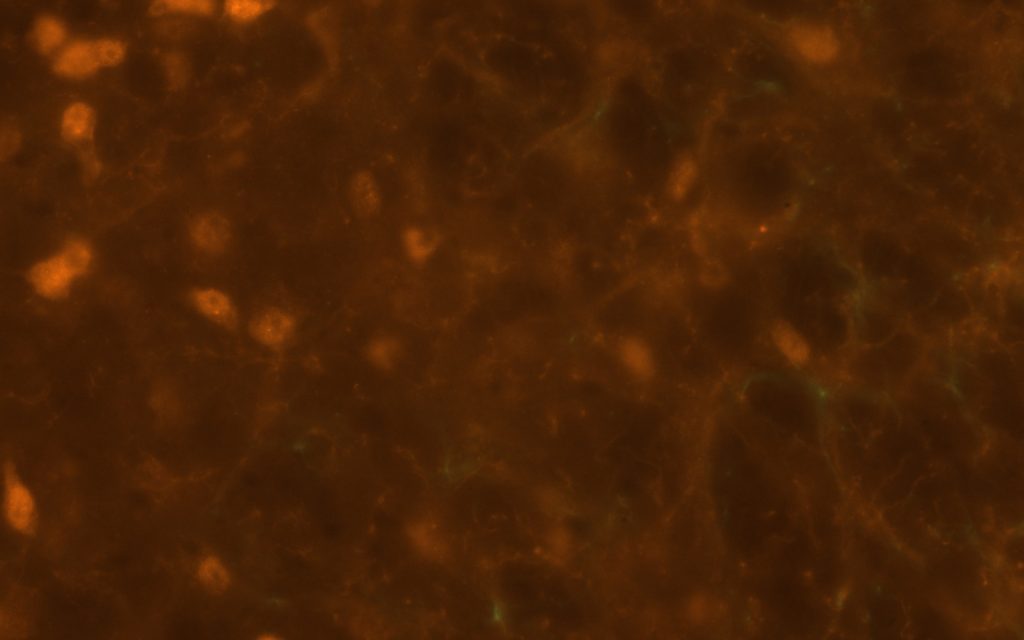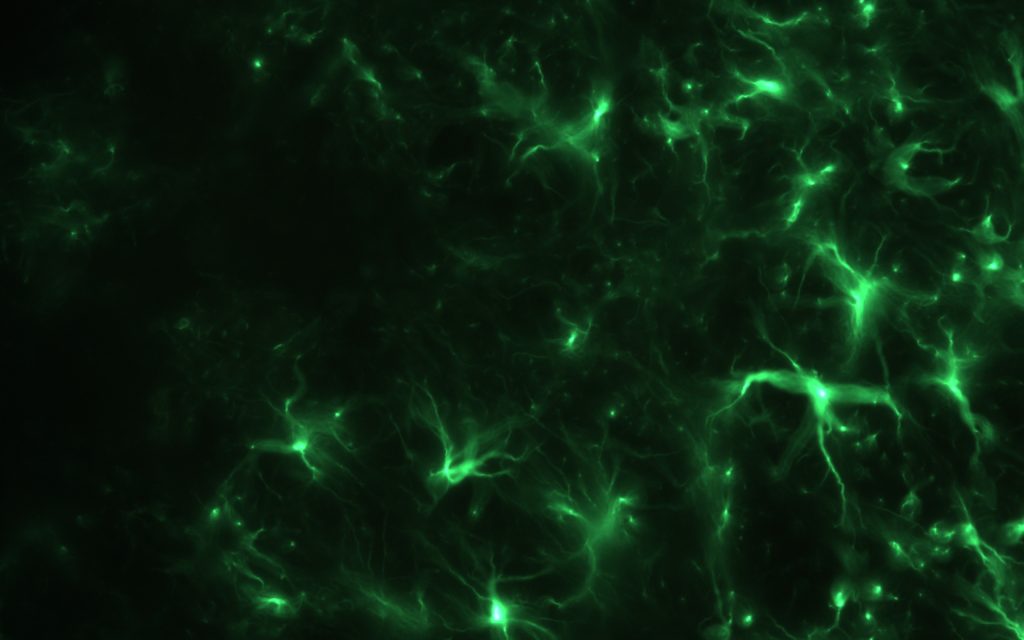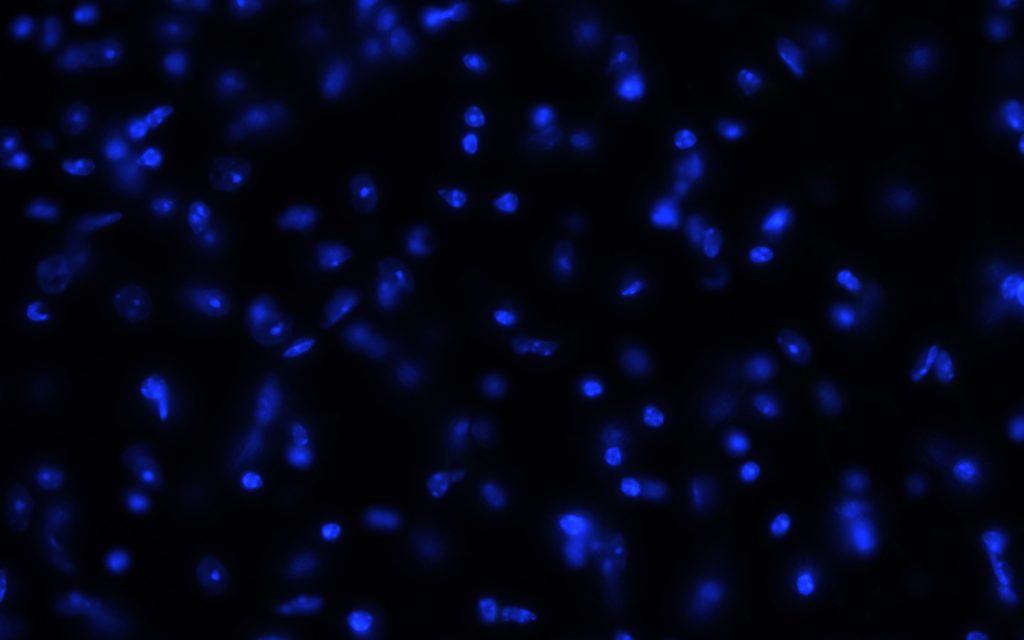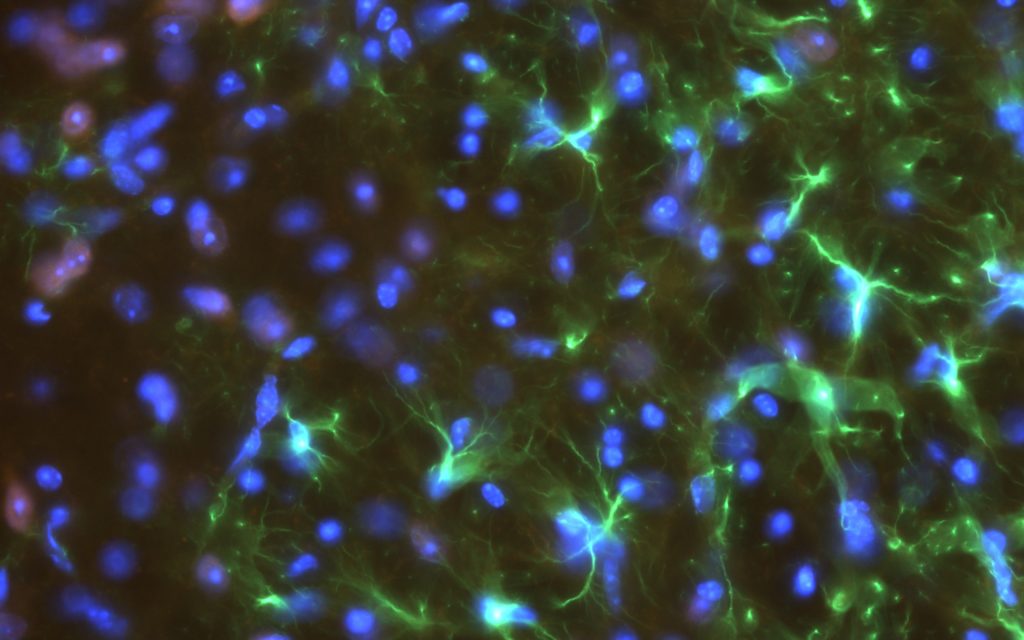If workers must detect fluorescence from both RNA and DNA-bound Acridine Orange a longpass set such as 49012 is recommnded. 49011, 39002 may be used with LEDs with CWL 465-495nm; 49002 may be used with 455-485nm CWL LEDs.
49012 may be used with LEDs with CWL 465-495nm; 19002 may be used with 470-490nm CWL LEDs.
39009 may be used with LEDs with CWL 470-490nm; 49024 may be used with 430-450nm CWL LEDs.
49000 may be used with LEDs with CWL 350-365nm; 39000 may be used with 365-380nm CWL LEDs.
49021 may be used with LEDs with CWL 400-410nm.
49011, 39002 may be used with LEDs with CWL 465-495nm; 49002 may be used with 455-485nm CWL LEDs.
49003, 39003 may be used with LEDs with CWL 490-505nm; 49023 may be use with 485-515nm CWL LEDs.
49014 may be used with LEDs with CWL520-540nm.
49004, 49305 may be used with LEDs with CWL 535-555nm; 39004 may be used with 535-550nm CWL LEDs.
49004, 49305 may be used with LEDs with CWL 535-555nm; 39004 may be used with 535-550nm CWL LEDs.
49031 may be used with LEDs with CWL from 560-580nm; 49008, 39010 may be used with 545-575nm LEDs.
49008, 39010 may be used with LEDs with CWL 545-575nm; 49306 may be used with 570-595nm CWL LEDs.
49015 may be used with LEDs with CWL 585-620nm.
49006 may be used with LEDs with CWL 595-640nm; 39007 may be used with 600-635nm CWL LEDs; 49009 may be used with 625-650nm CWL LEDs.
49022 may be used with LEDs with CWL 635-665nm.
49022 may be used with LEDs with CWL 635-665nm.
49007 may be used with LEDs with CWL 685-740nm.
49037 may be used with LEDs with CWL 725-755nm.
49006 may be used with LEDs with CWL 595-640nm; 39007 may be used with 600-635nm CWL LEDs.
49001, 39001 may be used with LEDs with CWL 430-440nm.
49005, 49305 may be used with LEDs with CWL 535-555nm.
49028 may be used with LEDs with CWL385-405nm.
49013 may be used with LEDs with CWL 435-455nm; 39001 may be used with 430-440nm CWL LEDs.
49002 may be used with LEDs with CWL 455-485nm.
49011, 39002 may be used with LEDs with CWL 470-490nm; 49003 set may be used with 490-505nm LED.
49004, 49305 may be used with LEDs with CWL 535-555nm; 39004 may be used with 535-550nm CWL LEDs.
49015 may be used with LEDs with CWL 585-620nm.
49006 may be used with LEDs with CWL 595-640nm; 39007 may be used with 600-635nm CWL LEDs; 49009 may be used with 625-650nm CWL LEDs.
49022 may be used with LEDs with CWL 635-665nm.
JNO-19008 may be used with LEDs with CWL 435-470nm.
19002 may be used with LEDs with CWL 470-490nm.
49002 may be used with LEDs with CWL 455-485nm; 49020 may be used with 475-485nm CWL LEDs; 39002 may be used with 470-490nm CWL LEDs.
49308 may be used with LEDs with CWL 475-495nm. 49303 may be used with 490-505nm CWL LEDs. 49303 is only recommended when multiplexing with BV480.
49000 may be used with LEDs with CWL 350-365nm; 39000 may be used with 365-380nm CWL LEDs and 49028 may be used with 385-400nm CWL LEDs.
49011, 39002 may be used with LEDs with CWL 470-490nm; 49003 set may be used with 490-505nm LED.
49027 may be used with LEDs with CWL 385-405nm.
49032, 49302 and 49001 may be used with LEDs with CWL 430-440nm.
49023 may be use with LEDs with CWL 490-520nm; 49014 may be used with 520-540nm CWL LEDs.
49014 may be used with LEDs with CWL520-540nm; 49023 may be use with 490-520nm CWL LEDs.
49031 may be used with LEDs with CWL from 560-580nm; 49005 may be used with 535-555nm CWL LEDs and 39004 may be used with 535-550nm CWL LEDs
49306 may be used with LEDs with CWL 570-595nm; 49008, 39010 may be used with 545-575nm CWL LEDs.
49015 may be used with LEDs with CWL 585-620nm.
49011, 39002 may be used with LEDs with CWL 470-490nm; 49003 set may be used with 490-505nm LED.
49011, 39002 may be used with LEDs with CWL 470-490nm; 49003 set may be used with 490-505nm LED.
Calcofluor White is a commonly used stain to detect fungi and yeast and other microorganisms. It is a non-specific stain which preferentially binds to chitin and cellulose in cell walls and as such is also used to visualize plant cells. Calcofluor White has extremely broad excitation/emission spectra, and as a result almost any filter set with UV or violet/blue excitation wavelengths will generate fluorescence emission which may be detected across a very broad range. Some samples will fluoresce strongly in the green wavelengths, others in the blue, and others yellow-orange. Because of this, filter selection is subjective, partly depending on the experience of the microscopist. Our filter sets 19012, 19000, and 19011 may be used successfully depending on the sample and the observer’s preference. 19000 and 19012 may be used with LEDs with CWL 365-380nm; 19011 may be used with 395-410nm CWL LEDs.
49001, 39001 may be used with LEDs with CWL 430-440nm.
49001, 39001 may be used with LEDs with CWL 430-440nm.
49003, 39003 may be used with LEDs with CWL 490-505nm.
49000 may be used with LEDs with CWL 350-365nm; 39000 may be used with 365-380nm CWL LEDs, 19011 may be used with 395-410nm CWL LEDs.
49011, 39002 may be used with LEDs with CWL 470-490nm; 49003 set may be used with 490-505nm LEDs.
49031 may be used with LEDs with CWL from 560-580nm; 49008, 39010 may be used with 545-575nm LEDs.
49004, 49005 may be used with LEDs with CWL 535-555nm; 39004 may be used with 535-550nm CWL LEDs.
49022 may be used with LEDs with CWL 635-665nm.
49006 may be used with LEDs with CWL 595-640nm; 39007 may be used with 600-635nm CWL LEDs; 49009 may be used with 625-650nm CWL LEDs.
49007 may be used with LEDs with CWL 685-740nm.
49000 may be used with LEDs with CWL 350-365nm; 39000 may be used with 365-380nm CWL LEDs, 49028 may be used with 385-400nm CWL LEDs.
39009 may be used with LEDs with CWL 470-490nm.
This dye and the related dye, Di-4-ANEPPS, are most effectively used as ratiometric indicators of membrane potential. Increases in membrane potential are indicated by a decrease in fluorescence intensity with approx. 440nm excitation and an increase in fluorescence intensity with approx. 530nm excitation. Use of this 71006 filter set requires an external filter wheel to house the 2 excitation filters and to facilitate rapid switching of filters for ratiometric measurements.
49024 may be used with LEDs with CWL 425-455nm; 39009, 19010 may be used with 470-490nm CWL LEDs.
49006 may be used with LEDs with CWL 595-640nm; 39007 may be used with 600-635nm CWL LEDs.
49004, 49305 may be used with LEDs with CWL 535-555nm; 39004 may be used with 535-550nm CWL LEDs.
49002 may be used with LEDs with CWL 455-485nm; 49020 may be used with 475-485nm CWL LEDs; 39002 may be used with 470-490nm CWL LEDs.
49007 may be used with LEDs with CWL 685-740nm.
49006 may be used with LEDs with CWL 595-640nm; 39007 may be used with 600-635nm CWL LEDs.
49004 may be used with LEDs with CWL 535-555nm; 39004 may be used with 535-550nm CWL LEDs.
49000 may be used with LEDs with CWL 350-365nm; 39000 may be used with 365-380nm CWL LEDs.
49021 may be used with LEDs with CWL 400-410nm; 19011 may be used with 395-410nm CWL LEDs.
49011, 39002 may be used with LEDs with CWL 465-495nm; 49002 may be used with 455-485nm CWL LEDs.
49004, 49305 may be used with LEDs with CWL 535-555nm; 39004 may be used with 535-550nm CWL LEDs.
49008, 39010 may be used with LEDs with CWL 545-575nm; 49306 may be used with 570-595nm CWL LEDs.
49015 may be used with LEDs with CWL 585-620nm.
49006 may be used with LEDs with CWL 595-640nm; 39007 may be used with 600-635nm CWL LEDs; 49009 may be used with 625-650nm CWL LEDs.
49022 may be used with LEDs with CWL 635-665nm.
49007 may be used with LEDs with CWL 685-740nm.
49037 may be used with LEDs with CWL 725-755nm.
49028 may be used with LEDs with CWL 385-400nm, 49021 may be used with 400-410nm CWL LEDs.
49001, 39001 may be used with LEDs with CWL 430-440nm.
49002 may be used with LEDs with CWL 455-485nm; 49020 may be used with 475-485nm CWL LEDs; 39002 may be used with 470-490nm CWL LEDs.
49002 may be used with LEDs with CWL 455-485nm; 49020 may be used with 475-485nm CWL LEDs; 39002 may be used with 470-490nm CWL LEDs.
49023 may be used with LEDs with CWL 490-520nm.
49005 may be used with LEDs with CWL 535-555nm; 39009 may be used with 470-490nm CWL LEDs.
49005 may be used with LEDs with CWL 535-555nm; 39005 may be used with 535-550nm CWL LEDs.
49003, 39003 may be used with LEDs with CWL 490-505nm.
49011, 39002 may be used with LEDs with CWL 465-495nm; 49002 may be used with 455-485nm CWL LEDs.
49011, 39002 may be used with LEDs with CWL 465-495nm; 49002 may be used with 455-485nm CWL LEDs.
49003, 39003 may be used with LEDs with CWL 490-505nm.
49003 may be used with LEDs with CWL 490-505nm; 49011 may be used with 465-495nm CWL LEDs.
49011, 39002 may be used with LEDs with CWL 465-495nm; 49002 may be used with 455-485nm CWL LEDs.
This dye has mainly been used as a retrograde neuronal tracer, although it can also distinguish between DNA and RNA binding according to its fluorescence emission. With two excitation peaks at approx. 330nm and 390nm, and two emission peaks at approx. 450nm and 600nm, our DAPI longpass filter sets 49025 and 19012 are appropriate for detection of the fluorescence emission associated with the both peaks, which together appear “gold”. The 49025 set is also useful for distinguishing between FluoroGold bound to DNA or RNA.
39009, 19010 may be used with LEDs with CWL 470-490nm.
For imaging applications using a monochrome camera, this longpass filter set will not distinguish FM 4-64 from TRITC or similar orange/red fluorochromes. To be able to distinguish between FM 4-64 and TRITC or Texas Red-like fluorochromes, contact us for a custom filter set. 19010 may be used with LEDs with CWL 470-490nm; 19006 may be used with 545-575nm CWL LEDs.
49008, 39010 and 49017 may be used with LEDs with CWL 545-575nm.
EGFP spectra used here; similar to Emerald GFP, TagGFP, Azami Green, mWasabi, etc.49002 may be used with LEDs with CWL 455-485nm; 49020 may be used with 475-485nm CWL LEDs; 39002 may be used with 470-490nm CWL LEDs.
49014 may be used with LEDs with CWL520-540nm; 49023 may be use with 485-515nm CWL LEDs.
49000 may be used with LEDs with CWL 350-365nm; 39000 may be used with 365-380nm CWL LEDs.
79006 may be used with LEDs with CWL 365nm.
79006 may be used with LEDs with CWL 365nm.
The spectral properties of ICG are strongly dependent on its concentration and the solute it is bound to, so care must be taken by workers to characterize their particular model system. This filter set 49030 is appropriate for most applications involving protein-bound ICG in various physiological media. ICG becomes concentrated in lipid environments, greatly shifting its spectral properties. 49030 may be used with LEDs with CWL 755-795nm.
JC-1 exists as a monomer at low concentrations and/or low membrane potentials and displays fluorescence ex./em. maxima similar to that of YFP. At higher concentrations and/or higher membrane potentials, JC-1 forms aggregates with a red-shifted emission maxima of 590nm and a broadened excitation spectra. The 49012 longpass filter set will allow detection of JC-1 monomer and aggregate simultaneously. 49012 may be used with LEDs with CWL 465-495nm; 19002 may be used with 470-490nm CWL LEDs.
JC-1 exists as a monomer at low concentrations and/or low membrane potentials and displays fluorescence ex./em. maxima similar to that of YFP. At higher concentrations and/or higher membrane potentials, JC-1 forms aggregates with a red-shifted emission maxima of 590nm and a broadened excitation spectra. Use of this 71019 filter set requires an external filter wheel to house the 2 emission filters to facilitate rapid switching of filters for ratiometric measurements.
49023 may be use with LEDs with CWL 485-515nm.
49008, 39010 may be used with LEDs with CWL 545-575nm; 49306 may be used with 570-595nm CWL LEDs.
49022 may be used with LEDs with CWL 635-665nm.
49026 may be used with LEDs with CWL 390-415nm; 39008 may be used with 405-430nm CWL LEDs.
49028 may be used with LEDs with CWL 385-400nm; 49000 may be used with LEDs with CWL 350-365nm; 39000 may be used with 365-380nm CWL LEDs.
49002 may be used with LEDs with CWL 455-485nm; 49020 may be used with 475-485nm CWL LEDs; 39002 may be used with 470-490nm CWL LEDs.
49008 may be used with LEDs with CWL 545-575nm; 49305 may be used with 535-550nm CWL LEDs.
49023 may be used with LEDs with CWL 485-515nm; 39009 may be use with 470-490nm CWL LEDs.
49008, 39010 may be used with LEDs with CWL 545-575nm; 49306 may be used with 570-595nm CWL LEDs.
49003, 39003 may be used with LEDs with CWL 490-505nm; 49023 may be use with 490-520nm CWL LEDs.
49006 may be used with LEDs with CWL 595-640nm; 39007 may be used with 600-635nm CWL LEDs; 49009 may be used with 625-650nm CWL LEDs.
49002 may be used with LEDs with CWL 455-485nm; 49011 may be used with 465-495nm CWL LEDs; 39002 may be used with 470-490nm CWL LEDs.
49004, 49305 may be used with LEDs with CWL 535-555nm; 39004 may be used with 535-550nm CWL LEDs.
49008, 39010 may be used with LEDs with CWL 545-575nm; 49306 may be used with 570-595nm CWL LEDs.
49008, 39010 may be used with LEDs with CWL 545-575nm; 49306 may be used with 570-595nm CWL LEDs.
49024 may be used with LEDs with CWL 430-450nm.
49014 may be used with LEDs with CWL 520-540nm; 49010 is not appropriate for use with LEDs because the bandwidth is too narrow.
49014 may be used with LEDs with CWL 520-540nm; 49010 is not appropriate for use with LEDs because the bandwidth is too narrow.
49017, 19006 may be used with LEDs with CWL 545-575nm
49008, 39010 may be used with LEDs with CWL 545-575nm; 49306 may be used with 570-595nm CWL LEDs.
49013 may be used with LEDs with CWL 435-455nm.
49002 may be used with LEDs with CWL 455-485nm; 49020 may be used with 475-485nm CWL LEDs; 39002 may be used with 470-490nm CWL LEDs.
49011 may be used with LEDs with CWL 465-495nm; 19008 may be used with 435-465nm CWL LEDs.
49006 may be used with LEDs with CWL 595-640nm; 39007 may be used with 600-635nm CWL LEDs.
49019 may be used with LEDs with CWL 595-640nm.
49011, 39002 may be used with LEDs with CWL 470-490nm; 49003 set may be used with 490-505nm LED.
49003, 39003 may be used with LEDs with CWL 490-505nm. 49303 may be used with 490-505nm CWL LEDs.
49021 may be used with LEDs with CWL 400-410nm; 19011 may be used with 395-410nm CWL LEDs.
49005 may be used with LEDs with CWL 535-555nm; 39005 may be used with 535-550nm CWL LEDs.
49024 may be used with LEDs with CWL 430-450nm; 39009, 19010 may be used with 470-490nm CWL LEDs.
Although the excitation maxima of qdot nanocrystals is in the UV, a broad range of excitation wavelengths may be used.
Although the excitation maxima of qdot nanocrystals is in the UV, a broad range of excitation wavelengths may be used.
Although the excitation maxima of qdot nanocrystals is in the UV, a broad range of excitation wavelengths may be used.
Although the excitation maxima of qdot nanocrystals is in the UV, a broad range of excitation wavelengths may be used.
Although the excitation maxima of qdot nanocrystals is in the UV, a broad range of excitation wavelengths may be used.
Although the excitation maxima of qdot nanocrystals is in the UV, a broad range of excitation wavelengths may be used.
Although the excitation maxima of qdot nanocrystals is in the UV, a broad range of excitation wavelengths may be used.
Although the excitation maxima of qdot nanocrystals is in the UV, a broad range of excitation wavelengths may be used.
Although the excitation maxima of qdot nanocrystals is in the UV, a broad range of excitation wavelengths may be used.
49014 may be used with LEDs with CWL 520-540nm; 49304 may be used with 540-550nm CWL LEDs.
49006 may be used with LEDs with CWL 595-640nm; 39007 may be used with 600-635nm CWL LEDs; 49009 may be used with 625-650nm CWL LEDs.
49022 may be used with LEDs with CWL 635-670nm.
49014 may be used with LEDs with CWL 520-540nm; 19004 may be used with 535-545nm CWL LEDs; 49010 is not appropriate for use with LEDs because the bandwidth is too narrow.
49008, 39010 may be used with LEDs with CWL 545-575nm; 49306 may be used with 570-595nm CWL LEDs.
49004, 49305 may be used with LEDs with CWL 535-555nm; 39004 may be used with 535-550nm CWL LEDs.
49004, 49305 may be used with LEDs with CWL 535-555nm; 39004 may be used with 535-550nm CWL LEDs.
49003, 39003 may be used with LEDs with CWL 490-505nm.
49023 may be use with LEDs with CWL 485-515nm.
49008, 39010 may be used with LEDs with CWL 545-575nm.
49008, 39010 may be used with LEDs with CWL 545-575nm.
49008, 39010 may be used with LEDs with CWL 545-575nm.
49011, 39002 may be used with LEDs with CWL 465-495nm; 49002 may be used with 455-485nm CWL LEDs.
49011, 39002 may be used with LEDs with CWL 465-495nm; 49002 may be used with 455-485nm CWL LEDs.
49006 may be used with LEDs with CWL 595-640nm; 39007 may be used with 600-635nm CWL LEDs; 49009 may be used with 625-650nm CWL LEDs.
49021 may be used with 400-410nm CWL LEDs, 49028 may be used with 385-400nm CWL LEDs.
49004, 49305 may be used with LEDs with CWL 535-555nm; 39004 may be used with 535-550nm CWL LEDs.
49004, 49305 may be used with LEDs with CWL 535-555nm; 39004 may be used with 535-550nm CWL LEDs.
49004, 49305 may be used with LEDs with CWL 535-555nm; 39004 may be used with 535-550nm CWL LEDs.
49023 may be used with LEDs with CWL 485-515nm.
Tetramethylrhodamine isothiocyanate
49004, 49305 may be used with LEDs with CWL 535-555nm; 39004 may be used with 535-550nm CWL LEDs.
49008, 39010 may be used with LEDs with CWL 545-575nm; 49306 may be used with 570-595nm CWL LEDs.
49008, 39010 may be used with LEDs with CWL 545-575nm; 49306 may be used with 570-595nm CWL LEDs.
49006 may be used with LEDs with CWL 595-640nm; 39007 may be used with 600-635nm CWL LEDs; 49009 may be used with 625-650nm CWL LEDs.
49003, 39003 may be used with LEDs with CWL 490-505nm.
49004, 49305 may be used with LEDs with CWL 535-555nm; 39004 may be used with 535-550nm CWL LEDs.
49008, 49017 and 19006 may be used with LEDs with CWL 545-575nm.
19008 may be used with LEDs with CWL 435-470nm; 49002 may be used with 455-485nm CWL LEDs
XTop
49008, 39010 may be used with LEDs with CWL 545-575nm; 49306 may be used with 570-595nm CWL LEDs.
49002 may be used with LEDs with CWL 455-485nm; 49020 may be used with 475-485nm CWL LEDs; 39002 may be used with 470-490nm CWL LEDs.
49023 may be use with LEDs with CWL 485-515nm; 49003 set may be used with 490-505nm LED.

